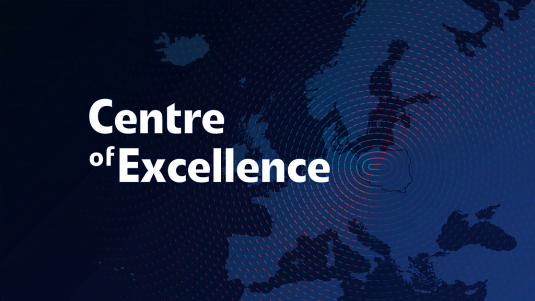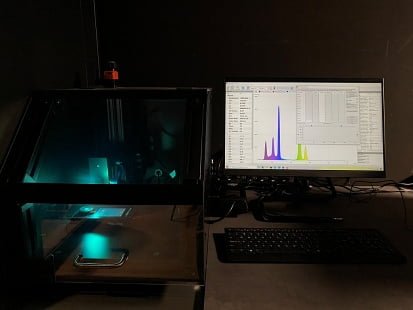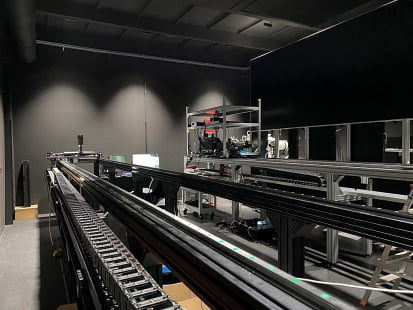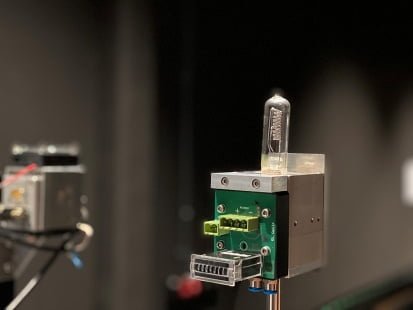CALIBRATION AND RESEARCH LABORATORY OF OPTICAL RADIATION (CARLO)

New calibration facilities - Calibration and Research Laboratory of Optical Radiation (CARLO)
As a result of a 2-year research project, finalised in 2020, GL Optic developed new calibration facilities and created Calibration and Research Laboratory of Optical Radiation ( CARLO ). Today, CARLO is the only laboratory in Central and Eastern Europe equipped with the Black Body Radiator – the primary standard source for implementation of spectral irradiance units. These types of reference standards are found only in the leading National Metrology Institutes (NMIs) in the world, such as NIST, PTB, NPL or VNIIOFI.
Traceability of absolute spectral calibration
The required level of excellence, low uncertainty and traceability of absolute spectral calibration is assured by a double verification of the reference standards. Our high temperature black body radiator was delivered by All-Russian Scientific Research Institute for Optical and Physical Measurements (VNIIOFI).
The only laboratory in Central and Eastern Europe equipped with the Black Body Radiator
This black body radiator together with an automatic optical comparator and a double monochromator constitute the realisation of a spectral irradiance standard. The double monochromator with photomultiplier, SI and InGaS detectors can perform measurements in the spectral range of 200-2400 nm. The consistency of the results obtained with this facility is confirmed by comparative studies with VNIIOFI Institute – member of Consultative Committee for Photometry and Radiometry (CCPR) and Working Group on Key Comparisons (CCPR-WG-KC). Additional verification of achieved results is obtained by a comparision with tungsten-halogen standard certified by VNIIOFI. The optical comparator is used for manufacturing optical radiation standards in the spectral range 200-2400 nm. On demand, it can be also used for spectroradiometer’s spectral calibration.

Video
CARLO provides calibration services, that extend the scope and quality of basic individual calibration procedures performed for each manufactured device.
Calibrations of spectroradiometric instruments are performed on specialised facilities dedicated for different stages of the calibration procedure. Calibration process consists of multiple steps and is performed with the use of the following calibration stands.

Stand for the wavelength calibration
Stand for the wavelength calibration of array spectroradiometers realised by means of Hg-Ar low pressure lamp producing Mercury and Argon spectral lines from 253-1700 nm. It is dedicated for determining the wavelength represented by each pixel of the array detector used in the spectroradiometer. Appropriate software tool provided with the stand can determine polynomial used to express relation between pixel position and spectral wavelength.

Stand for stray-light rejection
The calibration procedure is based on a series of spectral measurements across the wavelength range required by a spectroradiometer. Dedicated software creates, then, the correction table which becomes input data (a correction file) for stray-light reduction algorithm utilized by the GL Optic spectroradiometers’ firmware. The stray-light reduction software can reduce stray-light up to 2*10E-4 for GL SPECTIS 5.0 Touch.

Stand for detectors linearity calibration
It consist of 7 m long, fully programmable, automatic optical bench with dedicated software. The length of optical bench combined with high precision of positioning (down to 10 µm) allows for straightforward utilization of the inverse-square law in a wide dynamic range ensuring significantly lower error compared with other methods used for linearity calibration. The optical bench can cover dynamic range of 1:1000 with single pass and over 1:1000000 with multiple passes. It can be used for linearity verification and calibration of spectroradiometers, photometers and radiometers.

Absolute spectral irradiance and illuminance calibration
The multiple reference standards and light sources are mounted on the automatic changer combined with the same optical bench and are used to perform the absolute spectral irradiance and illuminance calibrations. The extended spectral calibration in the range from UV 200 nm throughout the entire VIS range up to the NIR 1050 nm is made with the use of deuterium and halogen standards. This facility is capable to perform absolute calibration of photometers and spectroradiometers.